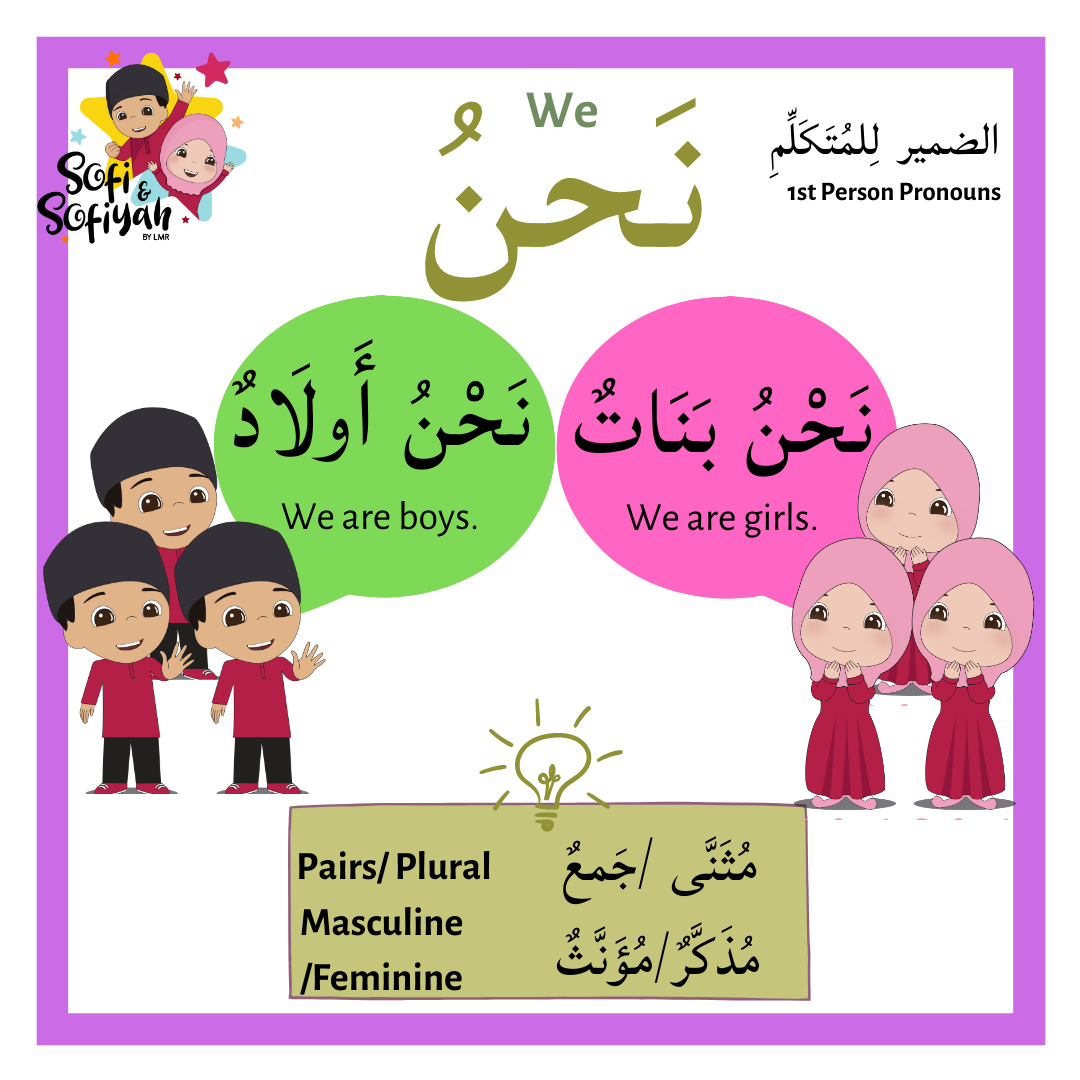The third category for ضَمِيرٌ مُنْفَصِلٌ is the 1st person pronounsالضمير للمُتَكَلِّم/للمُتَكَلِّمَة) ; أَنَا - نَحْنُ
*المُتَكَلِّم = The person who is talking
(نَحْنُ)
It means “We”.
The pronoun can be used for both female and male.
It’s usage is different than the other pronouns we’ve covered.
This is because, the nouns after it must be of two person or more.
If the pronoun is for female, the nouns after it will have the signs of feminine and also in plural.
Example:
نَحْنُ مُعَلِّمَاتٌ = We are teachers
*(ات) at the end is a sign of plural for feminine nouns known as - جَمع مُؤَنَّث سَالِم*
If the pronoun is for male, the nouns after it will be masculine and plural.
Example:
نَحْنُ مُعَلِّمُونَ = We are teachers
*(ون) at the end of the noun is a sign of plural for masculine nouns known as جَمع مُذَكَّر سَالِم*
Note that:
- The nouns should be for two person or more.
- The nouns should not refer to anything else other than humans.
- This pronoun (نَحْنُ) is applicable to both feminine (مُؤَنَّث) and masculine (مُذَكَّر).
- (ون) at the end of a noun is a sign for plural masculine nouns.
- (ات) at the end of a noun is a sign for plural feminine nouns.
- (أَولَاد) is a example of another type of plural known as جَمع تَكسِير.
#IloveArabic
#ArabicIsFun
#MadrasahPreparatory
#Singapore
#littlemuslimreaders
#ArabicVocabulary
#ArabicGrammar
#Primary1Madrasah


